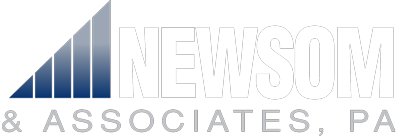The Small Business Administration an interim final rule that clarifies the amount of compensation that self-employed individuals are eligible to have forgiven. The SBA also revised its Paycheck Protection Program loan forgiveness application and issued a new EZ loan forgiveness application in an effort to streamline the loan forgiveness process.
Changes Made to SBA Interim Final Rules on Loan Forgiveness
On June 19, the U.S. Small Business Administration (SBA) issued another final interim rule which revises earlier rules in order to be consistent with the PPP Flexibility Act of 2020. In addition to changing the length of the covered period, the PPP Flexibility Act also amended the requirements regarding forgiveness of PPP loans to reduce, from 75 percent to 60 percent, the amount of PPP loan proceeds that must be used for payroll costs for the full amount of the PPP loan to be eligible for forgiveness.
Specifically, the new SBA rule sets out the amount of a loan that may be forgiven and provides that the actual amount of loan forgiveness will depend, in part, on the total amount spent over the 24-week period, beginning on the date the borrower’s PPP loan is disbursed (i.e., the covered period), on:
(1) payroll costs including salary, wages, and tips, up to $100,000 of annualized pay per employee (for 24 weeks, a maximum of $46,154 per individual, or for eight weeks, a maximum of $15,385 per individual), as well as covered benefits for employees (but not owners), including health care expenses, retirement contributions, and state taxes imposed on employee payroll paid by the employer (such as unemployment insurance premiums);
(2) owner compensation replacement, calculated based on 2019 net profit, with forgiveness of such amounts limited to eight weeks’ worth (8/52) of 2019 net profit (up to $15,385) for an eight-week covered period or 2.5 months’ worth (2.5/12) of 2019 net profit (up to $20,833) for a 24-week covered period, but excluding any qualified sick leave equivalent amount for which a credit is claimed under Section 7002 of the Families First Coronavirus Response Act (FFCRA) or qualified family leave equivalent amount for which a credit is claimed under Section 7004 of FFCRA;
(3) payments of interest on mortgage obligations on real or personal property incurred before February 15, 2020, to the extent they are deductible on Form 1040 Schedule C (business mortgage payments);
(4) rent payments on lease agreements in force before February 15, 2020, to the extent they are deductible on Form 1040 Schedule C (business rent payments); and
(5) utility payments under service agreements dated before February 15, 2020, to the extent they are deductible on Form 1040 Schedule C (business utility payments).
The SBA stated that it has determined that it is appropriate to limit the forgiveness of owner compensation replacement for individuals with self-employment income who file a Schedule C or F to either eight weeks’ worth (8/52) of 2019 net profit (up to $15,385) for an eight-week covered period or 2.5 months’ worth (2.5/12) of 2019 net profit (up to $20,833) for a 24-week covered period per owner in total across all businesses.
SBA Revises Loan Forgiveness Application and Issues Releases New EZ Form
Also, last week, the SBA, in consultation with the Department of the Treasury, posted a revised Paycheck Protection Program (PPP) loan forgiveness. The revised application, which is only 5 pages long including the last page which requests optional demographic information, implements changes made by the PPP Flexibility Act. In addition to revising the full forgiveness application, the SBA also published a new EZ version of the forgiveness application, Form 3508EZ, which is only three pages long including the last page which also requests optional demographic information. Form 3508EZ applies only to borrowers that:
(1) are self-employed and have no employees; or
(2) did not reduce the salaries or wages of their employees by more than 25 percent, and did not reduce the number or hours of their employees; or
(3) experienced reductions in business activity as a result of health directives related to COVID-19, and did not reduce the salaries or wages of their employees by more than 25 percent.
The EZ application requires fewer calculations and less documentation for eligible borrowers.
The PPP Flexibility Act changed the “covered period” in which borrowers have to utilize their loan proceeds and still be eligible for full forgiveness of the loan amount from eight weeks to 24 weeks. Both loan forgiveness applications give borrowers the option of using the original eight-week covered period (if their loan was made before June 5, 2020) or the extended 24-week covered period. These changes should result in a more efficient process and make it easier for businesses to realize full forgiveness of their PPP loan.
